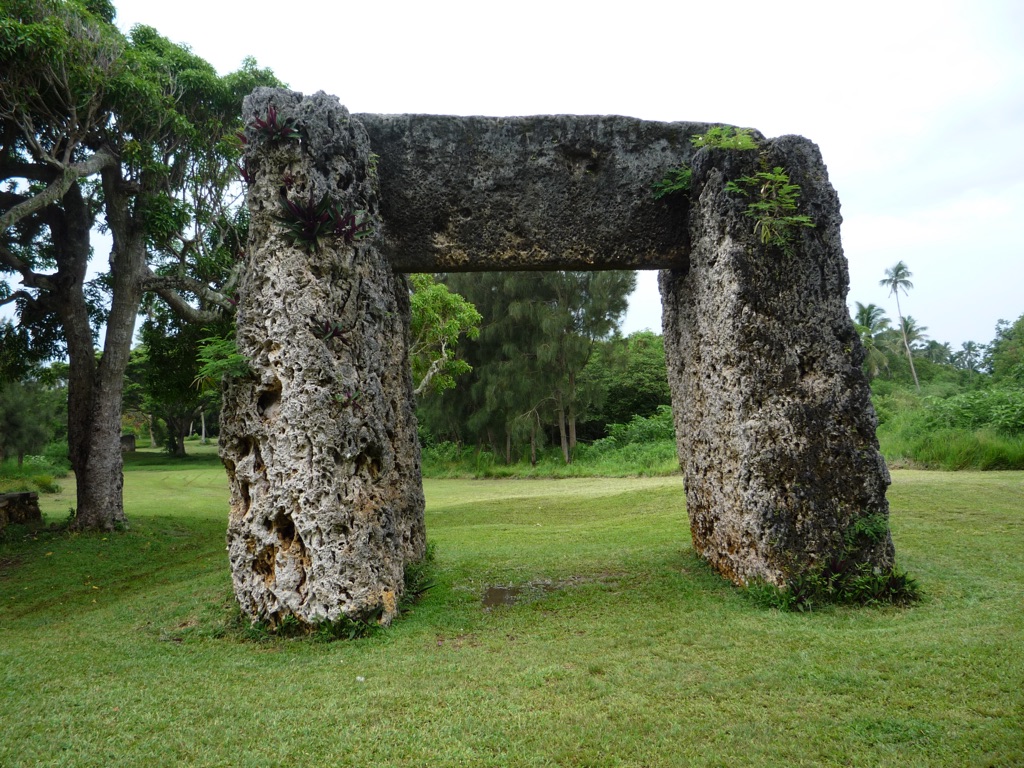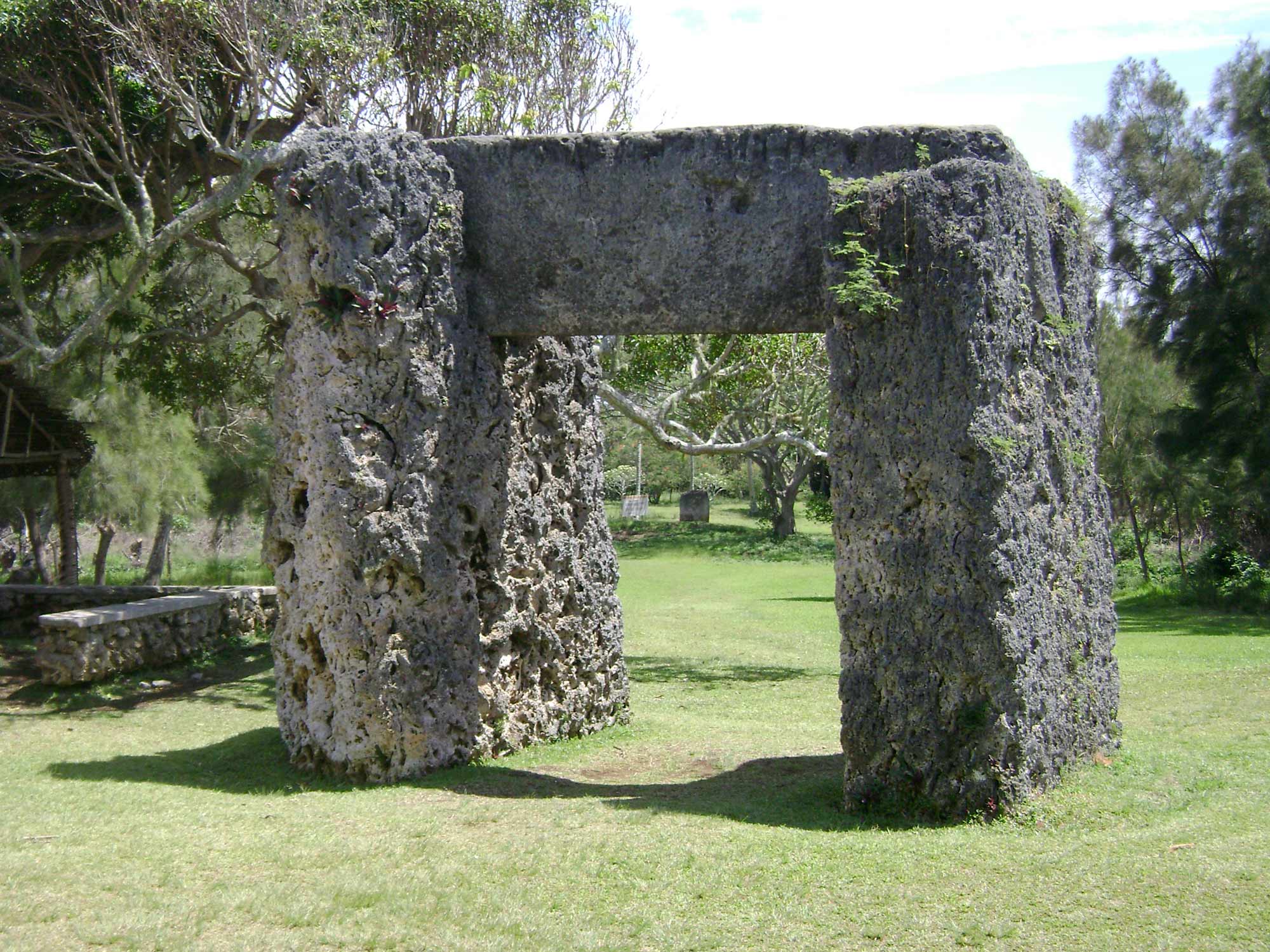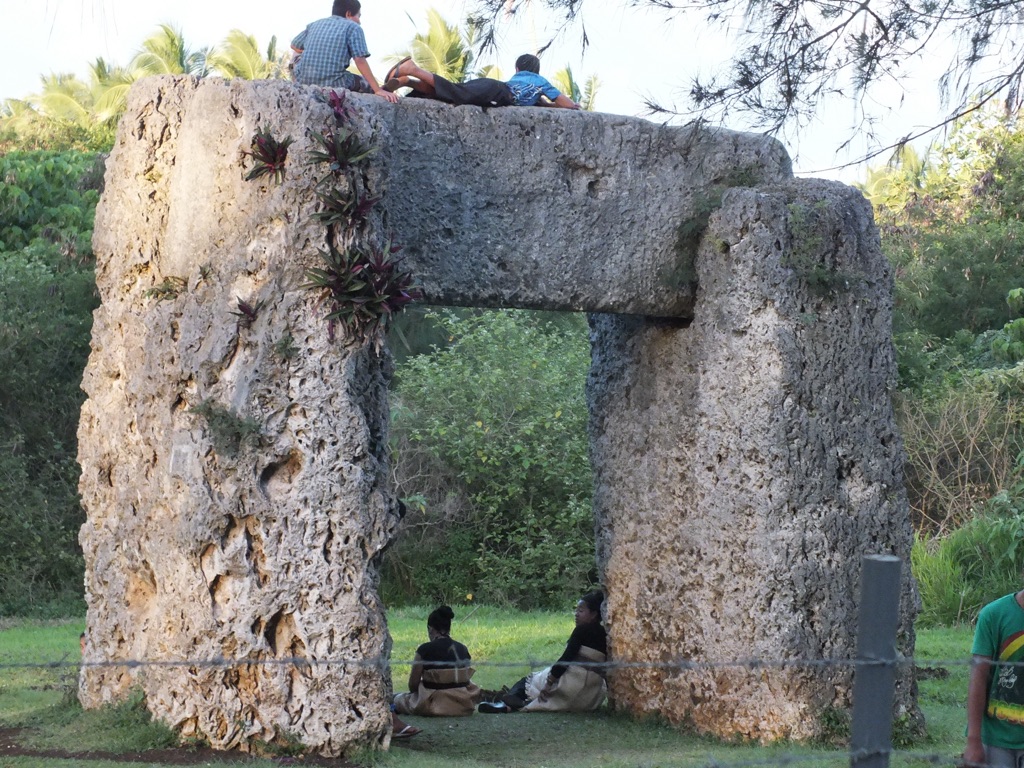The Haʻamonga ʻa Maui is a remarkable stone structure located in the Kingdom of Tonga. Often referred to as the ‘Stonehenge of the Pacific’, this megalithic trilithon is made from three massive limestone slabs. It stands as a testament to the engineering prowess of the ancient Tongans. The name translates to ‘The Burden of Maui’, alluding to the legendary Polynesian demigod known for his strength. The structure’s purpose remains a subject of debate, with theories ranging from an astronomical observatory to a royal gateway. Its construction is attributed to the 11th Tuʻi Tonga, Tuʻitatui, dating back to the 13th century. The Haʻamonga ʻa Maui continues to be an important cultural landmark and a source of national pride for Tonga.
Get your dose of History via Email
Historical Background of Haʻamonga ʻa Maui
The Haʻamonga ʻa Maui was discovered by European explorers in the 19th century, but the Tongans had long known about it. It was built by the ancient Tongans, under the reign of the 11th Tuʻi Tonga, Tuʻitatui. This ruler is said to have ordered its construction in the early 1200s. Local legend suggests that the structure was built with the help of the demigod Maui. The site has not been inhabited in modern times, but it remains a significant cultural and historical symbol for the Tongan people.
According to oral histories, the trilithon was constructed to mark the beginning of the Tongan empire. It served as a gateway to the royal compound of Heketā, a sacred area for the Tuʻi Tonga dynasty. The Haʻamonga ʻa Maui is also linked to significant astronomical events. It aligns with the winter solstice sunrise, suggesting its use as a calendar or observatory. This alignment has deepened the mystery and significance of the site.
The construction of the Haʻamonga ʻa Maui was a monumental task. The limestone slabs weigh approximately 40 tons each. They were likely transported from a quarry several kilometers away. The Tongans of that era did not have metal tools, making the feat even more impressive. The trilithon stands as a testament to their ingenuity and strength.

While the Haʻamonga ʻa Maui is not the scene of any known historical battles or events, it has witnessed centuries of Tongan history. It has stood through the rise and fall of the Tuʻi Tonga empire and the arrival of Christianity. The site remains an important place for cultural ceremonies and gatherings, linking the past to the present.
The Haʻamonga ʻa Maui’s significance extends beyond Tonga. It is a symbol of the wider Polynesian culture and its seafaring heritage. The structure has drawn comparisons to other megalithic sites around the world, highlighting the interconnectedness of ancient civilizations. Its construction remains a marvel of human history, reflecting the complexity and capability of the Tongan people.
About Haʻamonga ʻa Maui
The Haʻamonga ʻa Maui is a trilithon structure, consisting of three large coral limestone slabs. The two vertical stones stand approximately 5.2 meters tall, with a third horizontal stone placed atop. The entire structure is estimated to weigh around 80 tons. The coral limestone used in its construction is native to Tonga, showcasing the use of local materials.
The trilithon’s design is simple yet imposing. The stones are set in a ‘H’ shape, with the horizontal lintel stone locked in place by the uprights. The construction technique is reminiscent of other ancient stone structures, such as Stonehenge. The precise fitting of the stones suggests a high level of skill and knowledge in masonry.

Despite its age, the Haʻamonga ʻa Maui has withstood the test of time. The structure has remained largely intact, with minimal erosion or damage. This durability is a testament to the quality of its construction and the materials used. The Tongan climate, which can be harsh with tropical storms, has not significantly affected the integrity of the Haʻamonga ʻa Maui.
Architectural highlights of the Haʻamonga ʻa Maui include the sheer size of the stones and the precision of their placement. The structure’s orientation, with specific astronomical alignments, also points to a sophisticated understanding of celestial patterns by its builders. The trilithon’s simplicity belies the complexity of its construction and purpose.
The Haʻamonga ʻa Maui is not just a static monument. It is a dynamic part of Tongan culture. The site is a popular destination for both locals and tourists, offering a tangible connection to Tonga’s ancient past. The structure’s grandeur and mystery continue to captivate those who visit, making it a jewel in the crown of Pacific archaeology.
Theories and Interpretations
Several theories exist about the Haʻamonga ʻa Maui’s purpose. The most popular is its use as an astronomical observatory. The structure aligns with the winter solstice sunrise, suggesting it may have been used to mark time. This theory is supported by the importance of astronomy in Polynesian navigation and culture.
Another theory posits that the Haʻamonga ʻa Maui was a royal archway. It may have served as the eastern gate to the royal compound of Heketā. This interpretation aligns with its grandeur and the significance of gateways in Polynesian culture. The trilithon could have symbolized the power and prestige of the Tuʻi Tonga dynasty.

Some mysteries surround the Haʻamonga ʻa Maui. The exact methods used to transport and erect the massive stones remain unknown. The lack of written records from the time of its construction means that much of its history is based on oral tradition and archaeological interpretation.
Historians and archaeologists have matched the structure to the reign of the Tuʻi Tonga, Tuʻitatui. This dating is based on carbon dating and analysis of the surrounding area. The methods used include radiocarbon dating of charcoal found near the site, providing a timeframe for its construction.
The Haʻamonga ʻa Maui continues to be a subject of study and fascination. Its construction and purpose are a puzzle that may never be fully solved. The trilithon stands as a silent witness to the past, challenging modern minds to unlock its secrets.
At a glance
- Country: Kingdom of Tonga
- Civilization: Tuʻi Tonga Empire
- Age: Constructed in the early 13th century (circa 1200 AD)

